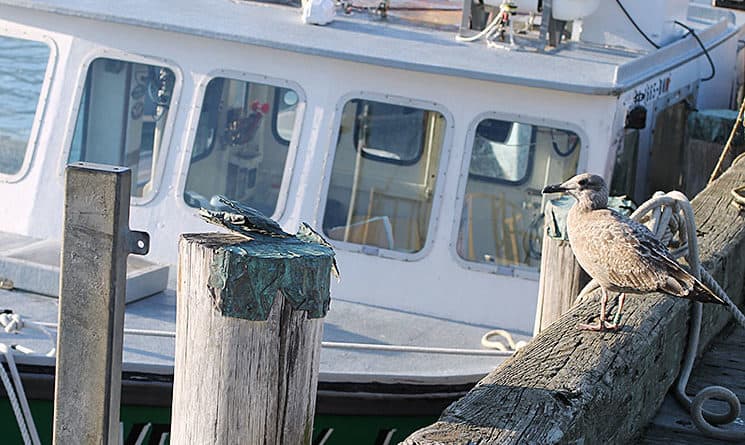Commercial fishermen in New Hampshire were dealt a heavy blow last month when the New England Fisheries Management Council imposed strict new “emergency” regulations on cod fishing. Among the measures: a 200-pound limit on the amount of cod commercial fishermen can catch and a ban on recreational cod fishing until April 31 of next year. The rules all but prohibit cod fishing in the Gulf of Maine for the next five months and mean that local fishermen, who counted on catching an anticipated 300 tons of fish through 2015, may now have to dock their boats.
According to Erik Anderson, president of the New Hampshire Commercial Fishermen’s Association, the new limits caught local fishermen off guard and have put a strain on the local fishing industry, which relies heavily on cod. The regulations followed a previous decision by the council to cut cod fishing limits by 75 percent beginning in May 2015.
“There has been a tremendous amount of regulatory conditions prior to the most recent announcement from the New England Fisheries Management Council which have already made it relatively difficult to operate and created a lot of anxiety. They basically shut down the fishery in a very short time frame,” Anderson says.
While it’s been clear that the council planned on cutting cod fishing levels in the Gulf of Maine, the new regulations introduced in November were a surprise, according to Anderson. As a result, many fishing spots that are valuable to in-shore fishermen are off-limits for the rest of the year.
They basically shut down the fishery in a very short time frame.
Cod fishing stocks are at an all-time low and the aim for the new regulations is to give the cod population time to bounce back. According to the Greater Atlantic Region of the National Oceanic and Atmospheric Administration (NOAA), Gulf of Maine cod stocks are at 3 to 4 percent of sustainable levels. While overfishing is often cited as a reason for the declining cod population, Anderson says other factors, including environmental changes, may be contributing to low cod levels.
“Management has been in place controlling fish harvest, cod being one of many,” says Anderson. “Everyone has operated under those terms. Overfishing is often made a popular culprit in these situations. However, most parties seem to agree it’s not a matter of overfishing.”
He also believes that NOAA’s methods for collecting and counting fish are inaccurate. “When you try to count things that aren’t visibly in reach, it makes the process less of an exact science,” says Anderson.
Spencer Montgomery, the Seacoast organizer for Slow Fish, which promotes community-based fishing and raises awareness about “underloved” fish species, agrees there may be flaws to how regulators and scientists measure fish populations. However, he thinks regulators and fishermen should take a more holistic view of fish populations.
“All these sustainable yield numbers and allowable catches are based on a single-species model. We should be looking at a multiple-species model. It is possible that we are cultivating some species, like dogfish, by focusing on a handful of species that fishermen are pressured to catch,” Montgomery says.
However, he doesn’t believe the new limits will be the end of commercial fishing in New Hampshire. New Englanders have over-romanticized cod, he says, and with the right approach and consumer support, fish like pollock, cusk, Acadian redfish, and monkfish could sustainably replace our dependence on cod.
“Pollock and cod generally swim in the same waters, so pollock could be an easier transition for ground fishermen whose livelihood depends on cod,” says Montgomery. “It makes a difference if they are swimming in the same place, and those two species generally are.”
Montgomery believes eating a more diverse array of fish and creating infrastructure that supports local fishing will help keep fish populations at a sustainable level. According to Montgomery, the United States imports roughly 92 percent of fish that consumers eat from other countries.
“We need education for consumers, and a transition back to the open air fish markets selling whole fish. Americans are conditioned to buy their fish filleted behind a sheet of glass,” he says.
Erik Chapman, a fisheries specialist with the University of New Hampshire Cooperative Extension, says local fishermen are looking at their options now that cod is off limits. Some are using gill nets that are raised off the sea-bed, so that the nets will avoid cod and catch pollock. “Fishermen are innovative and adaptable, but they are realists. They won’t try something unless they feel there’s a reasonable chance for success,” Chapman says.
Meanwhile, local fishermen must grapple with the new restrictions on cod until at least May 2015, when the new fishing season begins. By then, Anderson hopes the restrictions will be replaced with more generous limits.

